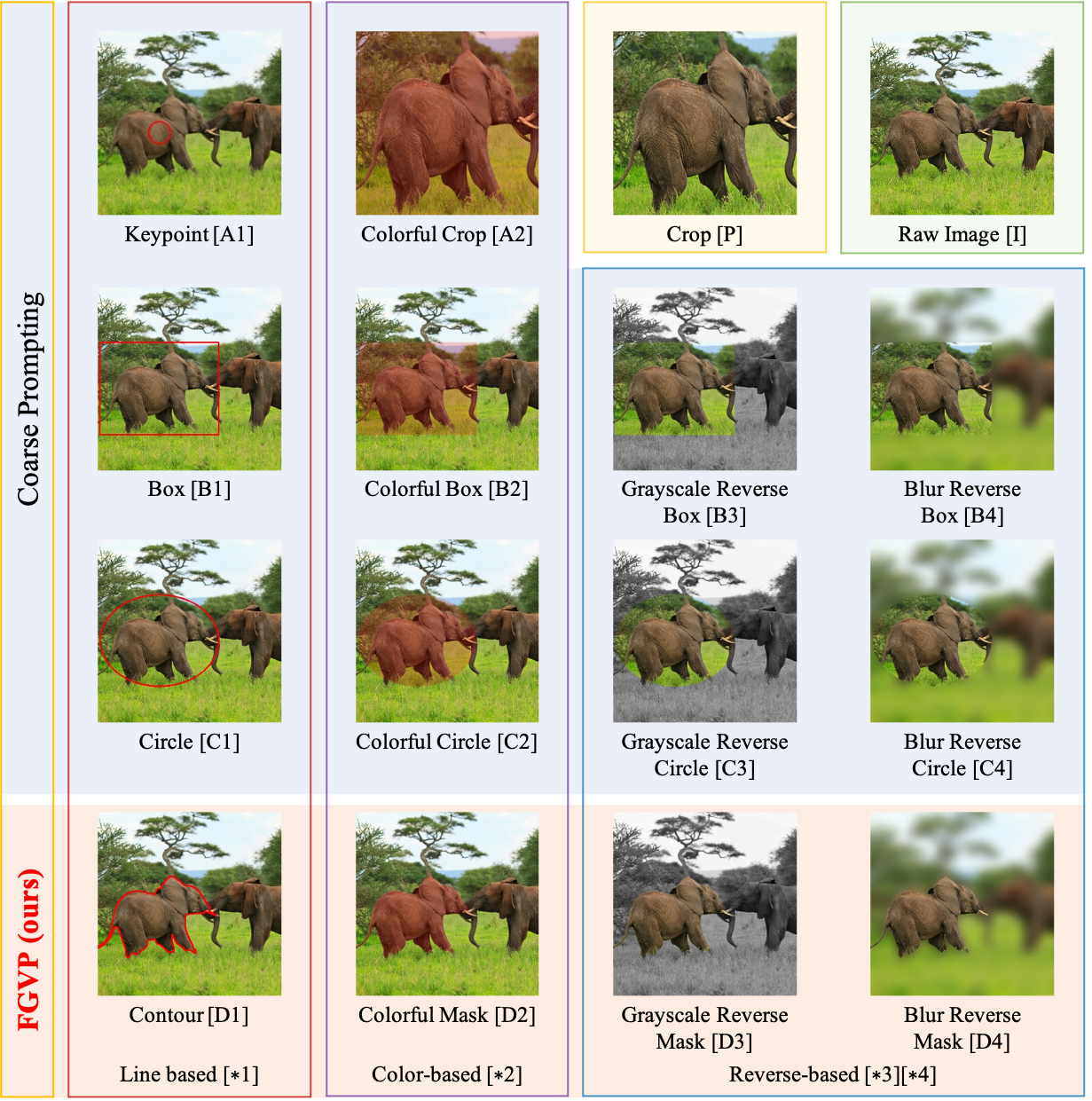Fine-Grained Visual Prompting
Vision-Language Models (VLMs), such as CLIP, have demonstrated impressive zero-shot transfer capabilities in image-level visual perception. However, these models have shown limited performance in instance-level tasks that demand precise localization and recognition. Previous works have suggested that incorporating visual prompts, such as colorful boxes or circles, can improve the ability of models to recognize objects of interest. Nonetheless, compared to language prompting, visual prompting designs are rarely explored. Existing approaches, which employ coarse visual cues such as colorful boxes or circles, often result in sub-optimal performance due to the inclusion of irrelevant and noisy pixels. In this paper, we carefully study the visual prompting designs by exploring more fine-grained markings, such as segmentation masks and their variations. In addition, we introduce a new zero-shot framework that leverages pixel-level annotations acquired from a generalist segmentation model for fine-grained visual prompting. Consequently, our investigation reveals that a straightforward application of blur outside the target mask, referred to as the Blur Reverse Mask, exhibits exceptional effectiveness. This proposed prompting strategy leverages the precise mask annotations to reduce focus on weakly related regions while retaining spatial coherence between the target and the surrounding background. Our Fine-Grained Visual Prompting (FGVP) demonstrates superior performance in zero-shot comprehension of referring expressions on the RefCOCO, RefCOCO+, and RefCOCOg benchmarks. It outperforms prior methods by an average margin of 3.0% to 4.6%, with a maximum improvement of 12.5% on the RefCOCO+ testA subset. Code is available at https://github.com/ylingfeng/FGVP.
PDF Abstract NeurIPS 2023 PDF NeurIPS 2023 Abstract


 MS COCO
MS COCO
 C4
C4
 PACO
PACO